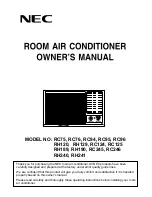
24
NOTE: Pressure test the gas supply system after the gas supply
piping is connected to the gas valve. The supply piping must be
disconnected from the gas valve during the testing of the pip-
ing systems when test pressure is in excess of 0.5 psig
(3450 Pa). Pressure test the gas supply piping system at pres-
sures equal to or less than 0.5 psig (3450 Pa). The unit heating
section must be isolated from the gas piping system by closing
the external main manual shutoff valve and slightly opening
the ground-joint union.
Check for gas leaks at the field-installed and factory-installed
gas lines after all piping connections have been completed. Use
soap-and-water solution (or method specified by local codes and/
or regulations).
NOTE: If orifice hole appears damaged or it is suspected to
have been re-drilled, check orifice hole with a numbered drill
bit of correct size. Never re-drill an orifice (see Fig. 34). A
burr-free and squarely aligned orifice hole is essential for prop-
er flame characteristics.
Fig. 34 — Orifice Hole
Step 11 — Install External Condensate Trap and
Line —
The unit has one
3
/
4
-in. condensate drain connection on
the end of the condensate pan and an alternate connection on the
bottom. See Fig. 35. Unit airflow configuration does not deter-
mine which drain connection to use. Either drain connection can
be used with vertical or horizontal applications.
To use the alternate bottom drain connection, remove the red
drain plug from the bottom connection (use a
1
/
2
-in. square socket
drive extension) and install it in the side drain connection.
The piping for the condensate drain and external trap can be
completed after the unit is in place. See Fig. 35 and 36.
Fig. 35 — Condensate Drain Pan (Side View)
NOTE: If the alternate bottom drain is not used check the drain
plug for tightness prior to setting the unit on the roof curb.
Fig. 36 — Condensate Drain Piping Details
All units must have an external trap for condensate drainage.
Install a trap at least 4-in. (102 mm) deep and protect against
freeze-up. If drain line is installed downstream from the external
trap, pitch the line away from the unit at 1-in. per 10 ft (25 mm in
3 m) of run. Do not use a pipe size smaller than the unit connection
(
3
/
4
-in.).
Step 12 — Make Electrical Connections
NOTE: Field-supplied wiring shall conform with the limita-
tions of minimum 63°F (33°C) rise.
FIELD POWER SUPPLY (SIZES 08-14) —
If equipped
with optional Powered Convenience Outlet: The power source
leads to the convenience outlet’s transformer primary are not fac-
tory connected. Installer must connect these leads according to
required operation of the convenience outlet. If an always-ener-
gized convenience outlet operation is desired, connect the source
leads to the line side of the unit-mounted disconnect. (Check with
local codes to ensure this method is acceptable in your area.) If a
WARNING
Failure to follow this warning could result in personal
injury, death and/or property damage.
• Connect gas pipe to unit using a backup wrench to
avoid damaging gas controls.
• Never purge a gas line into a combustion chamber.
• Never test for gas leaks with an open flame. Use a
commercially available soap solution made specifi-
cally for the detection of leaks to check all connec-
tions.
• Use proper length of pipe to avoid stress on gas con-
trol manifold.
BURNER
ORIFICE
WARNING
Failure to follow this warning could result in personal
injury or death.
Do not use gas piping as an electrical ground. Unit cabi-
net must have an uninterrupted, unbroken electrical ground
to minimize the possibility of personal injury if an electrical
fault should occur. This ground may consist of electrical
wire connected to unit ground lug in control compartment,
or conduit approved for electrical ground when installed in
accordance with NEC (National Electrical Code); ANSI/
NFPA 70, latest edition (in Canada, Canadian Electrical
Code CSA [Canadian Standards Association] C22.1), and
local electrical codes.
DRAIN
(FACTORY-IN
S
TALLED)
PLUG
CONDEN
S
ATE PAN (
S
IDE VIEW)
S
TANDARD
S
IDE DRAIN
ALTERNATE
BOTTOM DRAIN
NOTE: Trap should be deep enough to offset maximum unit static
difference. A 4 in. (102 mm) trap is recommended.
MINIMUM PITCH
1˝ (25 mm) PER
1
0´
(
3 m) OF LINE
BASE RAIL
OPEN
VENT
TO ROOF
DRAIN
DRAIN PLUG
ROOF
CURB
SEE NOTE
3˝ (76 mm)
MIN
Summary of Contents for 580J*16D Series
Page 4: ...4 Fig 2 Unit Dimensional Drawing Sizes 08 09 and 12 ...
Page 5: ...5 Fig 2 Unit Dimensional Drawing Sizes 08 09 and 12 cont ...
Page 6: ...6 Fig 3 Unit Dimensional Drawing Size 14 ...
Page 7: ...7 Fig 3 Unit Dimensional Drawing Size 14 cont ...
Page 8: ...8 Fig 4 Unit Dimensional Drawing Size 16 ...
Page 9: ...9 Fig 4 Unit Dimensional Drawing Size 16 cont ...
Page 15: ...15 Fig 9 580J 16 Roof Curb Details ...
Page 32: ...32 Fig 58 580J 08 14 Typical Perfect Humidity Dehumidification System Humidistat Wiring ...
Page 33: ...33 Fig 59 580J 16 Typical Perfect Humidity Dehumidification System Humidistat Wiring ...
Page 48: ...48 Fig 67 580J 08 12N P Typical RTU Open System Control Wiring Diagram ...
Page 49: ...49 Fig 68 580J 08 14 Typical RTU Open System Control Wiring Diagram ...
Page 50: ...50 Fig 69 580J 16 Typical RTU Open System Control Wiring Diagram ...
Page 52: ...52 Fig 71 580J 16 Typical RTU Open System Control Wiring Diagram with Perfect Humidity System ...
















































